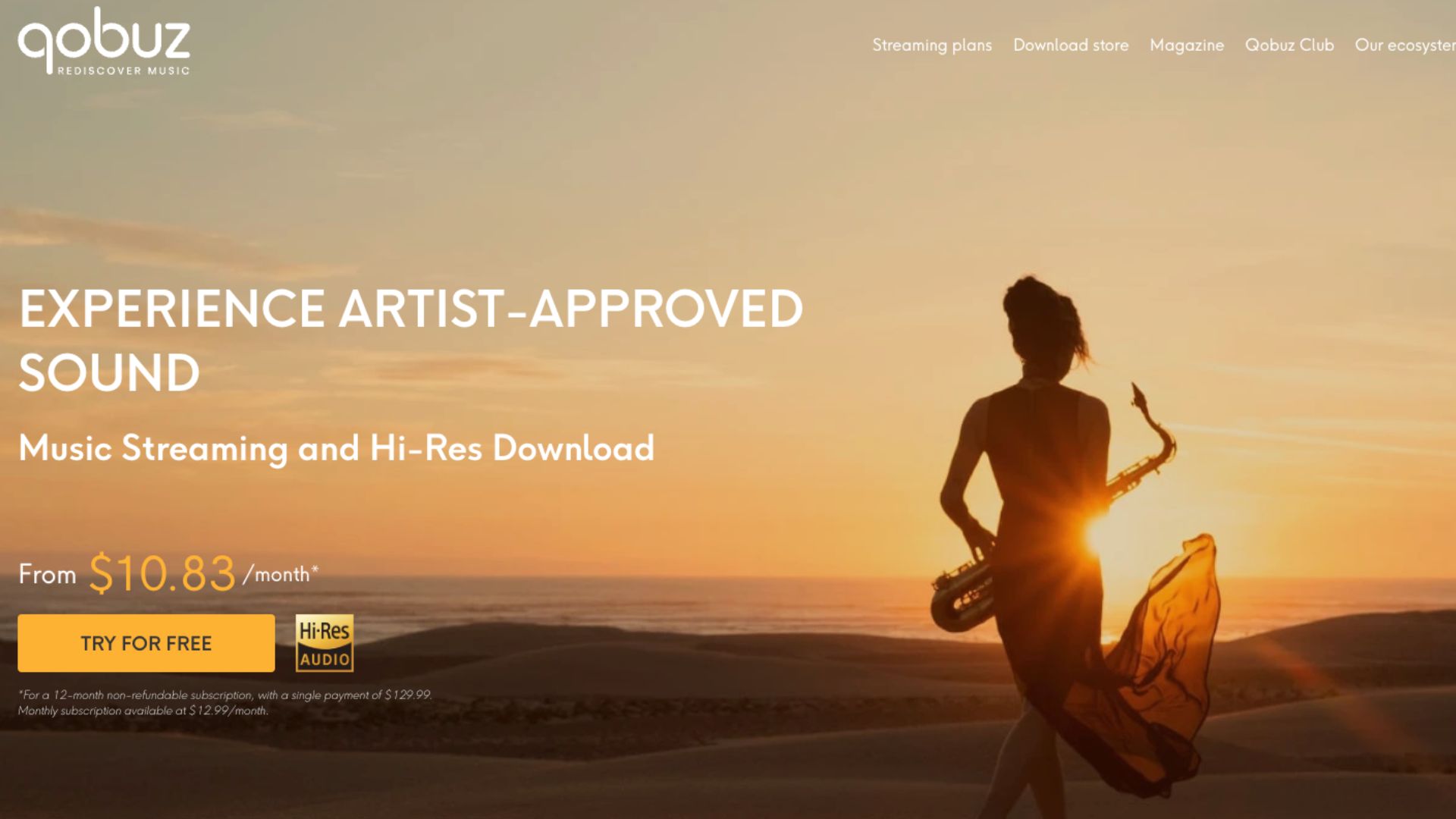The best music streaming service you've never heard of just unleashed a barnstorming new feature

Are you ready to get nerdy? Because we're about to get really, really nerdy. Hope you like acronyms, format titles, bitrates, and Hi-resolution file types, because they're all the order of the day here. Thankfully, I happen to really like talking about all those things, and how they can positively affect your listening experience — and thanks to French music streamer Qobuz, I get to talk about them at length.
Lucky you.
Qobuz has just announced and started rolling out new download options that are going to make audiophiles all over the world jolt their heads up from their desks like music-obsessed meerkats. If you go over to the Qobuz download store now, you can buy 22,500 tracks in the DSD and DXD formats, so that you can listen to the best quality audio over the best audiophile headphones. Nice.
What's a Qobuz?
Before we get into the really nitty gritty stuff, I'll talk through the Qobuz streaming service a little more. Hailing from France, Qobuz is a music streamer that is dedicated to bringing the highest quality streaming to audiophiles. There's a desktop app, a mobile app, and it generally works with all your favorite devices through wireless protocols like AirPlay 2.
It's supposed to go up against the likes of Tidal, Apple Music, and other high-res music streaming platforms. In recent months it has seen some big updates to tempt you over from your music streaming service of choice, including a drop in the price of subscriptions, and a new reduced student price.
Its library has grown to catch up to the competition, hosting a grand 100 million hi-res music tracks. You can access all of those tracks offline as well, but Qobuz has an extra feature that sets it apart for people who want to own their music, and access even higher quality music for their expensive Hi-Fi equipment.
Even internet music streaming has limits, and if you want to access the highest quality tunes, they should be stored locally. That's because they're huge — a proper hi-res track takes up around 121MB of storage for every minute of playback. In other words, that leaves you with space for about 165 average-length albums on a 1TB storage device.
Get instant access to breaking news, the hottest reviews, great deals and helpful tips.
To put it in perspective, an album in Spotify MP3 quality usually tops out at around 100ish megabytes, letting you store around 10,000 albums on a 1TB storage device. Perfect for keeping lots of music available, bad if you want top-quality tracks.
Unlike the other streaming services out there, Qobuz lets you download tracks that would otherwise be far too big to stream over your mobile data. There's a fully-fledged online music store, akin to a very high-quality iTunes. There you'll find the new feature. Qobuz will now let users choose to download music in DSD (or Direct Stream Digital) and DXD (or Digital eXtreme Definition) when they shop on the Qobuz store.
Why, though?

Ok, so I don't want to get too technical here, but I'll do my best to explain why this is so exciting to audio nerds (like me). DSD is an older hi-res format that tries to be as efficient as possible in storing data, while having a greater range of hearable frequencies. DSD is said to have a range of 120 dB, while a CD-quality recording would only have around 96 dB. What does this mean? More music for you to hear — think the really subtle parts of an orchestra, or the deepest of low notes in a dance track. There is also potentially more space available in a track, although there are some who would call this a kind of audio placebo.
DXD on the other hand is just a more impressive audio format, giving a much higher quality to your music thanks to numbers like a 'sampling rate of 32bit/252kHz'. That's much higher than that which you'll find on a CD, or even played from Apple Music. You'll find more DSD tracks on Qobuz, as you might expect, although more audiophiles will be looking for the DXD tracks.
Now, I for one am very excited by the prospect of extremely impressive music tracks becoming available on my streaming platform of choice. I can't see these formats becoming available for streaming any time soon on account of their immense file size, but I am looking forward to buying them from the store and giving them a good go with my favorite bits of Hi-Fi equipment. I've tried my best here not to veer into the unapproachable, but if you're interested in all these numbers and acronyms, then What Hi-Fi has some excellent explainers about the different formats, sampling rates, bit rates, and more.
More from Tom's Guide
- I love iOS 18's iPhone Mirroring feature — but I've found one big problem
- 7 top new TV shows premiering on Netflix, Apple TV and more (Oct. 14-20)
- The future is handheld — so where do Xbox and PlayStation go next?

Tammy and her generous collection of headphones have found a new home — Tom's Guide! After a two-and-a-half-year stint as iMore's resident audiophile, Tammy's reviews and buying guide expertise have more focus than ever on Tom's Guide, helping buyers find the audio gear that works best for them. Tammy has worked with some of the most desirable audio brands on the planet in her time writing about headphones, speakers, and more, bringing a consumer focussed approach to critique and buying advice. Away from her desk, you'll probably find her in the countryside writing (extremely bad) poetry, or putting her screenwriting Masters to good use creating screenplays that'll never see the light of day.
